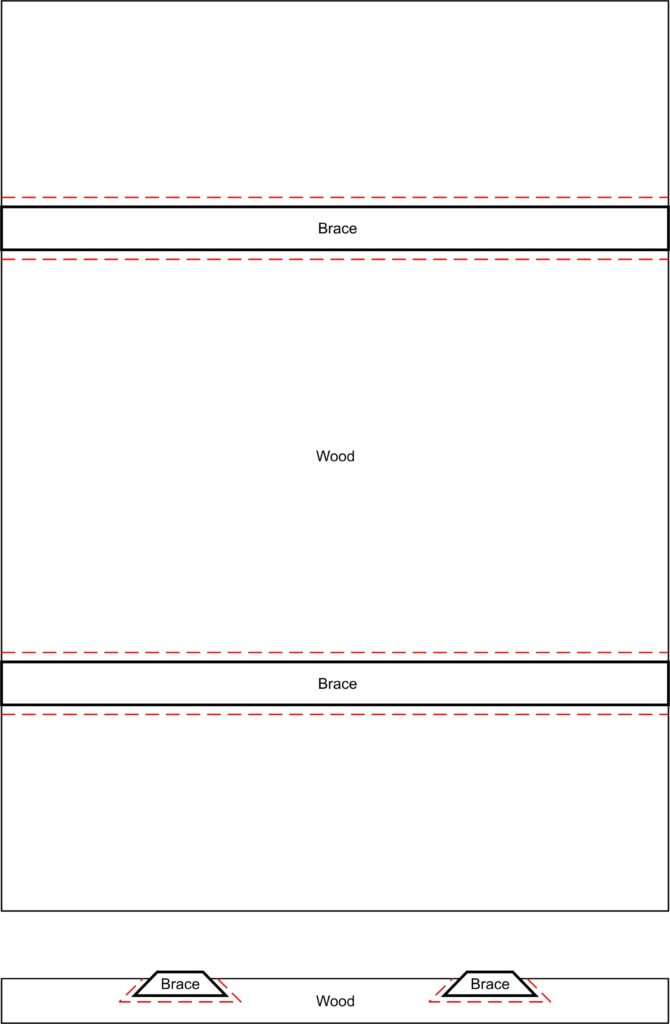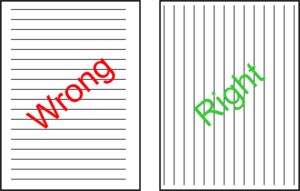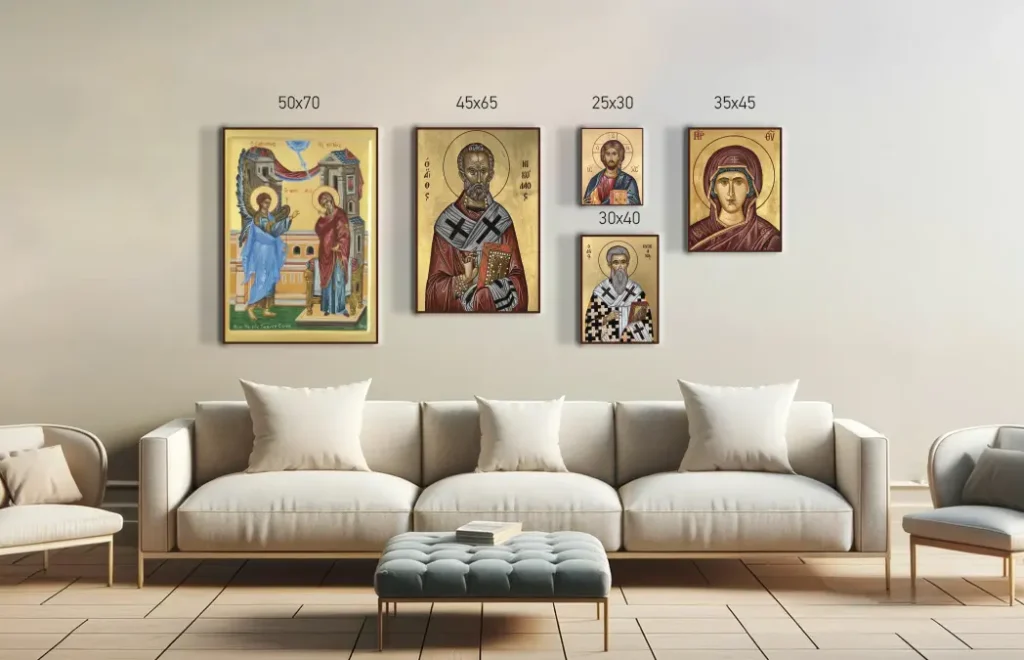The first step for every artist is to choose the right wood on which to paint. After all, wood is the medium on which our creation will be transferred through the decades and why not through the centuries, a legacy for the next generations of hagiographers, painters, scholars, collectors and generally everyone interested in this art.
From the old days until today, various types of wood have been used and are still used today.
The choice of wood should be based on the criteria of its durability over time, how unaffected it will remain by environmental factors and its resistance to insects and fungi.
The wood should be dried, it would be good if it dries naturally, allowing a certain amount of time between the time it is cut and the time it comes into our hands and becomes the basis of our painting surface. Of course we should be careful that it is not impregnated with any kind of chemical. A minimum time before we prepare it for painting is definitely six months. Our storage area where we will keep our wood there should be shady, dry, ventilated and the temperature of the room at 15Co .
Woods to form our painting carrier may be natural woods such as chestnut, fir (best avoided), oak, willow, walnut, poplar, pine (best avoided), cypress (best avoided), cedar, linden, beech, beech, acacia, acacia, birch, maple, mahogany, mahogany, holly, elm, honey, aguise (to be avoided), laurel, abura, olive (to be avoided) and artificial woods such as marine plywood (in various grades), M. D.F. (best avoided), chipboard (best avoided) and plywood.
For artificial woods, we should pay attention to the quality of the glue used to bond them, as well as the wood itself.
Our painting carrier should not have on its surface any roses, cracks, chips, chips, rotting, cracks, glue residues, insect traces and stucco. Such wood shall be rejected without a second thought.
It is advisable that our wood should consist of a single one-piece surface and not of two, three or more pieces, glued together next to each other. We say this because due to contractions and expansions, the joined pieces of wood will tend to create problems at their joints, causing the painted surface to present issues that may not be adequately corrected, if at all, thus having total or partial destruction of our image. But if one chooses to create such a painting surface, one should definitely place in a horizontal direction wedge-fit on the back some braces (at least two).We can also use braces on single-cut wood, especially natural wood, but also artificial wood, and it would be good in the grooves that we will make for the braids not to use any glue or nails-screws, but to use wedge-screws. Also, the braces should have their waters counter (opposite) to those of the surface of our wood.

Picture 1. Placement of the braces on the wooden support (plan and section).
In one-piece wood we should pay extra attention to how it is cut. It should follow the waters of the wood in their vertical direction and not the horizontal, looking from the height of the wood and downwards. This is how we should choose our wood, due to the fact that wood is still a living organism even after it is cut, and the possibility of scaling is quite high.

Picture 2. The wrong and the right direction of the nerves in the wood.
What is certain is that already scrubbed wood should not be used in every case. It is advisable that the wood should be dry, as we said at the beginning, before using it for painting. Preference should be given to woods that have been dried naturally and not artificially. It is quite time-consuming this process of natural drying. What is certain is that after this period of time has elapsed and carefully stored, the results of whether or not the wood is suitable for painting on its surface, with any problems or changes that it may “pull out”, will be clearly visible to us.
Some woods I’ve used have gone as long as 20 years before I’ve had to paint them. When asked, when I gave a picture to a person who had asked me for it, if the wood I used was okay, I was in the perfect position to tell him that the picture would last for years and years, until something might happen to it.

Picture 3. Wood staining.
The thickness of natural wood should be at least 3 cm and for artificial wood from 1.5cm to 2cm. The height for both types of wood should not exceed 1.5 m. The various sizes that we can usually use, in length and width for both types of wood, should start from 20×25 cm and go up to 50×70 cm, with intermediate dimensions 22X30cm, 27X35cm, 30X40cm, 35X45cm, 40X50cm, 40X60cm, 45X60cm, 45X65cm.
Tip 1.: If you have a carpenter friend, a lumberyard in your neighborhood, you can go there and ask them to give you some of their relics for free. Also, the thought of recycling materials can lead to miraculous results, as many people, things they don’t need, including pieces of valuable lumber, are left outside the doors of homes. Even a leisurely walk in nature can give you the wood that will suit you to create something beautiful with it.
Tip 2.: If your hands are “catching” it would be a creative piece and that of making the wood for your pictures entirely by you. So if you happen to get your hands on some wood that you need to shape or cut to the dimensions you want, it would be nice to have a small space and the necessary tools for this job. I say this because there are now ready-made woods on the market for the sake of convenience, to the point of choice that it is up to the point where the wood is ready to be painted, with the gold passed and the design imprinted.
